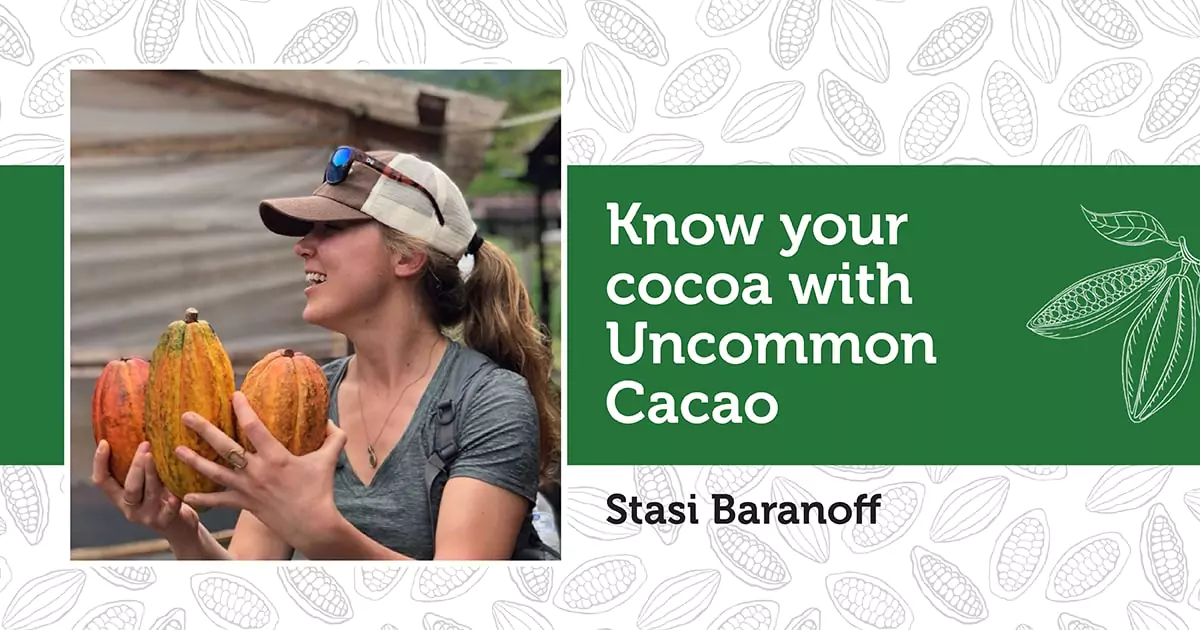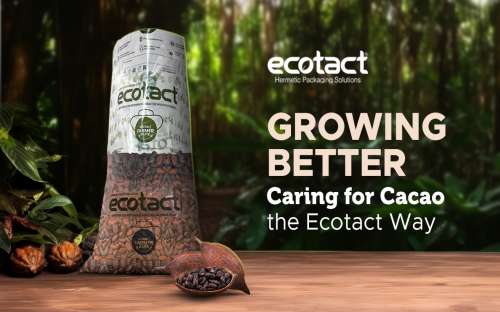In conversation with Uncommon Cacao member, Stasi Baranoff about the cocoa industry.
1) Tell us more about how you ventured into the cocoa industry?
In 2010, our Founder and CEO Emily Stone followed her love for chocolate and experience in environmental activism to set up a cocoa processing company in Southern Belize. That was the beginning of the Uncommon Cacao Group, a certified B Corp social enterprise dedicated towards improving farmer livelihoods through high quality, transparent cacao supply chains. We are a group of three companies: Maya Mountain Cacao (a processor and exporter in Belize), Cacao Verapaz (an exporter in Guatemala) and Uncommon Cacao (a broker in the US). Uncommon Cacao is a brokerage that sells beans from both of our sister companies, as well as 8 additional supply partners in 8 additional countries.
2) How has the cocoa industry evolved over the past few years?
Since we started in 2010, we’ve seen a growth of interest in bean-to-bar, specialty chocolate companies that are focused on high quality, ethically sourced ingredients. Our chocolate-making customers, and their consumer customers, expect a consistency in the product with an impactful story, whether that’s social, environmental, or economic impact. In the past, consumers and traders thought of cocoa and chocolate as a fungible and cheap commodity. These days, people in the industry understand that different qualities of cacao deserve different prices and that specialty chocolate maker and consumers shouldn’t think of cacao as a commodity at all.
3) What are the best practices of producing quality cocoa?
Consistency is key. Chocolate makers seek consistency, with the same quality and flavor from harvest to harvest. In order to achieve this, producer groups, or processing companies, need to follow processing protocols to ferment and dry cocoa beans. The usual process involves these steps:
- Good agronomic practices to maintain tree and pod health, to maximize yield and ensure mature pods.
- Harvesting only the ripe cocoa pods, that have a high enough BRIX (or sugar) content to ferment
- Combining enough volume of cocoa pulp and beans in fermentation boxes to have a critical mass of juices and sugars for the fermentation process to be successful.
- Conducting both anaerobic and aerobic fermentation, for a span of 4-8 days depending on the location, type of cocoa, and volume of fermenting cacao
- Two stages of drying; a slow drying process, usually covered and on mesh tables, and fast drying, usually in direct sunlight on a patio, raked frequently throughout
- Sorting, by hand if possible, to ensure that only whole cacao beans are packed into the bags for export.
4) What makes the different variety of cocoa unique from each other?
There are hundreds, if not thousands, of cocoa varieties due to the ease with which cocoa can be cross-bred. However, generally speaking there are considered to be four familial groups: Criollo, Amelonado, Forastero, and Trinitario. These are different not only in shape and native growing regions, but also in general flavor notes.
5) How do you preserve your cocoa produce? How important are good hermetic Packaging solutions to your business and are there any specific brands that you prefer?
Cacao is generally stored in large sacks – polypropylene or jute/sisal. These sacks are stored on pallets inside warehouses. Because cacao is sensitive to odour, and is intentionally dried to a very specific humidity level, hermetic packaging is essential for a high quality product. Our company uses Ecotact which serves the purpose of preservation of humidity and protection from odour.
6) Have you noticed a change in the consumption pattern/demand of Cocoa during the Pandemic?
Specialty or Fine Flavor cocoa has maintained its consumption patterns, and craft chocolate has been resilient for the most part. We saw a reduction in demand over the summer months for cocoa beans, but as the holiday season starts, demand is picking back up as our customers make chocolate for the holidays.
7) How do you think hermetic packaging is helping the cocoa industry in these difficult times?
Reliable, clean storage is essential during this time. As purchasing slows, the cocoa needs to maintain its humidity and quality. As a company, we decided to continue operations, and stick to our original purchase commitments with each of our cocoa suppliers. We knew that cocoa is most stable in its fermented and dried state, packed in hermetically sealed bags, and least stable as a fruit on the tree. If a farmer were to leave the fruit on the tree to rot, inevitably their future harvests would suffer due to disease that can easily spread when trees are not maintained. We knew that if income were still flowing to farmers, plots would be maintained and would be more disease resistant for future harvests. As a result, we made sure to keep our commitments, and with cocoa packed in Ecotact bags in a US warehouse, we know we can keep this cocoa in good quality for months and potentially years to come.
8) Has the pandemic affected the cocoa industry adversely?
It seems to have affected different cacao growing and consuming regions differently, so it’s hard to say with a blanket statement that it has affected the whole industry adversely. Luckily, for the most part, cocoa growing regions seem to be only mildly affected by the pandemic in terms of health in the regions. Rural farming communities are more spread out, and so COVID does not seem to be spreading as widely. This means that farmers are healthy and able to tend to farms.
9) Preferred moisture levels she prefers to pack the cocoa into Ecotact bags?
Cocoa beans need to be at a humidity level less than 7.5% – ideally in the 6-7.5% range. This is to prevent the growth of mold both on the outside and on the inside of the beans. Therefore, our suppliers pack their cocoa in hermetically sealed bags at a humidity level in this range, to keep its stability and flavor.
10) Do you use Ecotact bags for storage in warehouse also or only for exports ?
We keep cocoa stored in Ecotact bags both in the country of origin as well as in the warehouses in the US. There are a number of risks that cocoa can come into contact with both in origin warehouses and in destination warehouses: odors, humid climates, cocoa moths, and so we try to do everything we can to preserve the quality. This includes keeping cocoa stored in Ecotact bags.
 French
French
 English
English Spanish
Spanish
